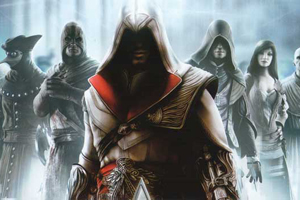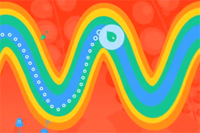E3 2010: Ubisoft: Bridging Reality and Virtual Reality
By Drake
Part of the E3 2010 Convention Report Collection
 At the end of day 1 at E3 2010, Ubisoft held a press conference to showcase their latest projects. They came out with what can only be described as a two prong attack on the industry, the first phase being to keep a firm hold on the market with their franchises, and the second phase to start finding new, innovative ways to integrate the latest gaming technology into people’s lives, both in interactivity and by taking gaming away from the console. From the looks of it, Ubisoft has effectively succeeded in both objectives.
At the end of day 1 at E3 2010, Ubisoft held a press conference to showcase their latest projects. They came out with what can only be described as a two prong attack on the industry, the first phase being to keep a firm hold on the market with their franchises, and the second phase to start finding new, innovative ways to integrate the latest gaming technology into people’s lives, both in interactivity and by taking gaming away from the console. From the looks of it, Ubisoft has effectively succeeded in both objectives.
With titles like Assassin’s Creed: Brotherhood, Ghost Recon: Future Soldier, Raving Rabbids Travel in Time, and Driver: San Francisco as new releases, it’s hard to see Ubisoft enter a position in the market where they could be considered vulnerable. Their games are pretty solid among gamers, with the Driver series being able to cut into EA’s Need for Speedfranchise’s earnings, or Your Shape to compete with not only with Wii Fit, ,but competes with all fitness games across all consoles. Then there’s always Raving Rabbids, and who can actually hate those little guys? Also new this year, is Child of Eden, which is simply gorgeous and looks amazingly fun to boot. The basic premise of this rhythm action game is to shoot down viruses in a fictional archive of human memories called Project Lumi. This game alone sold me on Ubisoft’s presentation as a whole, especially when I noticed the gameplay choice used on stage was Microsoft’s Kinect. (Why wasn’t this inthis in the Microsoft presentation?) 
Instead of ending there and just securing their name with exciting continuations of their already-successful game series, Ubisoft went one step further and introduced new titles exploring different avenues for gaming as a whole, avenues that will break the bridge between real life and the world inside the game, finally achieving the long-desired goal of “virtual reality.” For example, during the press conference, Ubisoft displayed a live demo of a laser tag game for home use called BattleTag. It may be similar to your run-of-the-mill laser tag game you pay 15 dollars for per round, but it adds different game modes to play through, and the scores and stats are stored to a computer that is networked with each hand-held gun. Then there’s Your Shape, which is a more in-depth version of Wii Fit that can scan a body and keep real time readings of your movement, track progress while working out, and help you improve the quality of your workouts. Then, finally, we have Innergy, which is a game designed to reach “cardiac coherence.” Basically, by attaching a sensor to your finger that monitors your heart beat and using your breathing, you control a character moving through what looks like a sound-wave-shaped tunnel, timing your inhaling and exhaling to keep him within the boundaries. This is supposed to make your body more relaxed and help relieve stress. 
While most will disagree with me and say that games like BattleTag and Innergy are wastes of time for Ubisoft and show a lack of creativity in new games, I respectfully disagree. I feel experimental games like these that may not rake in the large cash flow of, say, Assassin’s Creed, or even appeal to the gamer audience at large, are good first steps at reaching for the much bigger goal of Virtual Reality. With Ubisoft looking at sensors to monitor heart rate and breathing, using Kinect to monitor a person’s movement, and using peripherals like laser tag guns meant to interact more directly with each other and not the console, it’s only a matter of time until Ubisoft can take the those innovations with games likeChild of Eden and integrate them into a virtual reality game for retail.
